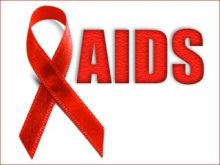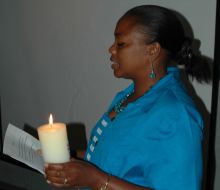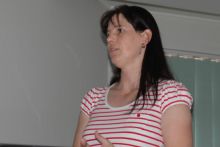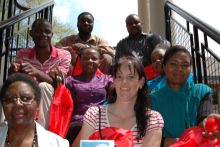Candlelight for World Aids Day 2010
|
Over the past 27 years, nearly 25 million people have died from Aids (Acquired Immuno-deficiency Syndrome).
Most of the current deaths and infections occur in sub-Saharan Africa, where South Africa records the highest number of people living with HIV (Human Immuno-deficiency Virus).
Furthermore, HIV/Aids has complicated efforts to fight poverty, improve health and promote much needed development in developing countries.
In the spirit of World Aids Day, the SAEON National Office staff took some time off to observe and reflect on the challenges that HIV/Aids poses in the workplace and the world in general. Led by SAEON Human Resources Practitioner Leazill Peenze, messages of love, hope, faith and light were read out by staff during a candle lighting ceremony.
The message in the four candles
Love: “This candle represents love. But so many people who are HIV positive and who already have Aids do not experience love. They hear us talking down at them. They hear how we condemn them, or how we first want to know how they contracted the virus before we are willing to help. They do not understand what love really means, because we do not show it to them. It is difficult for this candle to keep on burning in their lives.”
Hope: “This candle represents hope. This message of hope should be an anchor for people who are suffering. And yet, just as love, hope is extinguished for many people with HIV/Aids, so they often experience hopelessness in their lives – without prospects, without expectation. Everything is dark for them. Somewhere along the line, this light ceases to burn as well.”
Light: “The light of love and hope has died in many people living with HIV/Aids. It seems as if they do not hear or understand the message of these candles. They only hear how we criticize them, how we hurt them, and how we judge them. Then it becomes dark in their lives. Nevertheless, there is a candle that is still burning. It is the candle symbolising faith. Let us hear its message.”
Faith: “Many people who are HIV positive and have Aids have lost this light along the way. They struggle with so many emotions and crises that their faith becomes uncertain. They encounter so many people who are believers but who reject them until they lose the will to believe. Some of them haven’t even really discovered the light. For this reason, it is difficult for the light of faith to keep on burning in their lives.”
SAEON views
“Observing World Aids Day is part of the National Research Foundation's employee awareness campaign to promote debate and awareness of the Aids pandemic in the workplace,” says Peenze. She acknowledges that there is a need to pay even more attention to issues surrounding HIV/Aids in the workplace, but warned that people also need to be aware of other illnesses that impact a lot of workplaces.
“That is why next year, the NRF plans to focus in detail on the various health awareness campaigns to ensure full awareness by staff and to generate debate on issues that impact employers and employees in the workplace,” says Peenze.














